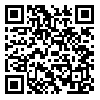Volume 2, Issue 3 (3-2011)
jemr 2011, 2(3): 71-98 |
Back to browse issues page
Download citation:
BibTeX | RIS | EndNote | Medlars | ProCite | Reference Manager | RefWorks
Send citation to:



BibTeX | RIS | EndNote | Medlars | ProCite | Reference Manager | RefWorks
Send citation to:
Jabari A, Renani M, Akbari N. A Monetary Model for Weighting of Vote in Economic Analysis of Democracy. jemr 2011; 2 (3) :71-98
URL: http://jemr.khu.ac.ir/article-1-179-en.html
URL: http://jemr.khu.ac.ir/article-1-179-en.html
1- University of Isfahan , a.jabari@ase.ui.ac.ir
2- University of Isfahan
2- University of Isfahan
Abstract: (30048 Views)
The unequal allocation of economic resources, or other resources of wealth, regarding to the efficiency among the factors of production, is considered as one of the most important condition of optimal resource allocation in the market system. In other words, the market mechanism in the process of allocating resources among the factors of production rewards to the resources with higher returns. So, the article’s main question is whether the unequal distribution of votes similar to the unequal distribution of money, can be applied in the process of the optimal allocation of citizens' benefits in the democracy system?
The answer of this question has been given by the monetary model which is similar to the democracy, using the concept of Anthony Downs’s (1957) rational voter hypothesis, the idea of Paul Samuelson's (1958) monetary economic model, the microeconomic theory of consumption and just one of the major components of the market –the unequal distribution of money–. Using the designed model, we can survey several statuses, Such as: vote exchange possibility (similar to the barter economy) and weighting of votes.
The article’s results show that the social contract possibility for exchange and the ability to save money causes to change of the shape and nature of the money from public goods to private goods and the interest rate creation. In this situation, one of the important findings of Samuelson model of monetary is appeared in the space of voting theory. One of the contributions of the monetary model of Samuelson is that one of the origins of the monetary interest rate is population growth. The other results show that the weighting of buyers in the monetary model design under conditions can be led to more efficient choices and social welfare increase ultimately.
KEYWORDS: Democracy, Market, Political Market, Money, the Weighting of Votes, Downs’s Rational Voter Hypothesis, Samuelson's Monetary Economic Model.
Keywords: Democracy, Market, Political Market, Money, the Weighting of Votes, Downs’s Rational Voter Hypothesis, Samuelson\'s Monetary Economic Model.
Type of Study: Applicable |
Subject:
سایر
Received: 2011/03/9 | Accepted: 2011/09/7 | Published: 2011/06/15
Received: 2011/03/9 | Accepted: 2011/09/7 | Published: 2011/06/15
Send email to the article author
| Rights and permissions | |
 | This work is licensed under a Creative Commons Attribution-NonCommercial 4.0 International License. |






